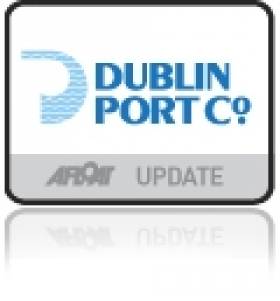Displaying items by tag: Ferryport
Ferry First As Scandinavian Fleetmate Joins Stena Operations Out of Rosslare Europort
Afloat highlights the above busy scene as a trio of ferries and all from the same operator gathered recently in Rosslare Europort, writes Jehan Ashmore.
Most notably among the Stena Line ferries was the arrival of Stena Vinga (on right) which for the first time arrived to the Co. Wexford port. The ropax vessel is serving in the role of Irish Sea winter relief ferry while on 'loan' from Stena's fleet based in Scandinavia.
According to the operator's timetable, the temporary replacement ferry (firstly standing in on the Rosslare-Cherbourg service ) is to remain operating on the Ireland-France connection until the route's routine ropax Stena Horizon returns on 28 October. This is to involve an inbound sailing from Normandy.
Normally Stena Vinga operates the Gothenburg-Frederikhavn route that links the west Swedish city (homeport headquarters of Stena Line) and the east Danish port. This route is only 15 minutes longer than the Rosslare-Fishguard route served by the veteran vessel Stena Europe which too ran in Scandinavia firstly for Sessan Line.
On this day last week Stena Vinga began Rosslare-Cherbourg sailings albeit with much reduced passenger and freight capacity though this does note pose an issue given it is a much quieter time of the year coupled with Covid-19 restrictions.
Stena Vinga's transfer to the Ireland-France connection had led to the continental route's Stena Horizon deployed to the Dublin-Holyhead route. This allowed the ropax to take over the roster of Stena Estrid the leadship of the new 'E' -Flexer series.
The newbuild built in China had only entered service in January is currently covering Belfast-Cairnryan crossings. This is to enable Stena Superfast VII dry-dock for annual maintanence at Harland & Wolff.
Stena Vinga replaced a previous relief ferry Stena Nordica which recently carried out such duties including its former routine route of Dublin-Holyhead and beforehand Belfast-Liverpool, a first for this ropax despite until then serving all of Stena's Irish Sea network.
RMR Shipping Increase Irish-West African Sailings
Dublin Port Company has welcomed RMR Shipping's new increased frequency of its service to West Africa, from a monthly to fortnightly service starting next month, writes Jehan Ashmore.
The direct service which began in 2009 using a single vessel from the capital to Nigeria, Ghana with calls to Lagos and Takoradi, is set to gain a second ship as demand for the service rises.
Two 157-trailer capacity ro-ro sisters are to be deployed on the route, they are the 23,000 gross tonnes sisters Celandine and Celestine. The Belgium-flagged pair both built in 2000 will take 18-days to transit between Dublin and Ghana.
The next sailing to Dublin is due on 5 July when the Celandine (PHOTO) is to dock at berth 51a, which is one of three berths located in the ports multi-user ferryport Terminal 1, shared by Irish Ferries, Stena Line and seasonal services of the Isle of Man Steam Packet Company.
Commenting on the development, Eamonn O'Reilly, Chief Executive Dublin Port Company said: "We are delighted with this development. Anything which increases the link between Ireland and emerging economies beyond Europe has got to be good for exports.
He added, "The service to Takoradi complements our involvement with Irish Aid from 2008 to 2010 in delivering an international training programme for ports in emerging countries including Ghana. The TrainForTrade programme was delivered with UNCTAD and we are hopeful of being able to announce a follow-up to the first programme in the coming months.
The development of RMR Shipping on the direct sea freight link was also welcomed by the Irish Exporters Association (IEA) whose chief executive John Whelan commented that exports to Nigeria last year exceeded €200m, the second largest market for Irish goods into Africa.

























































